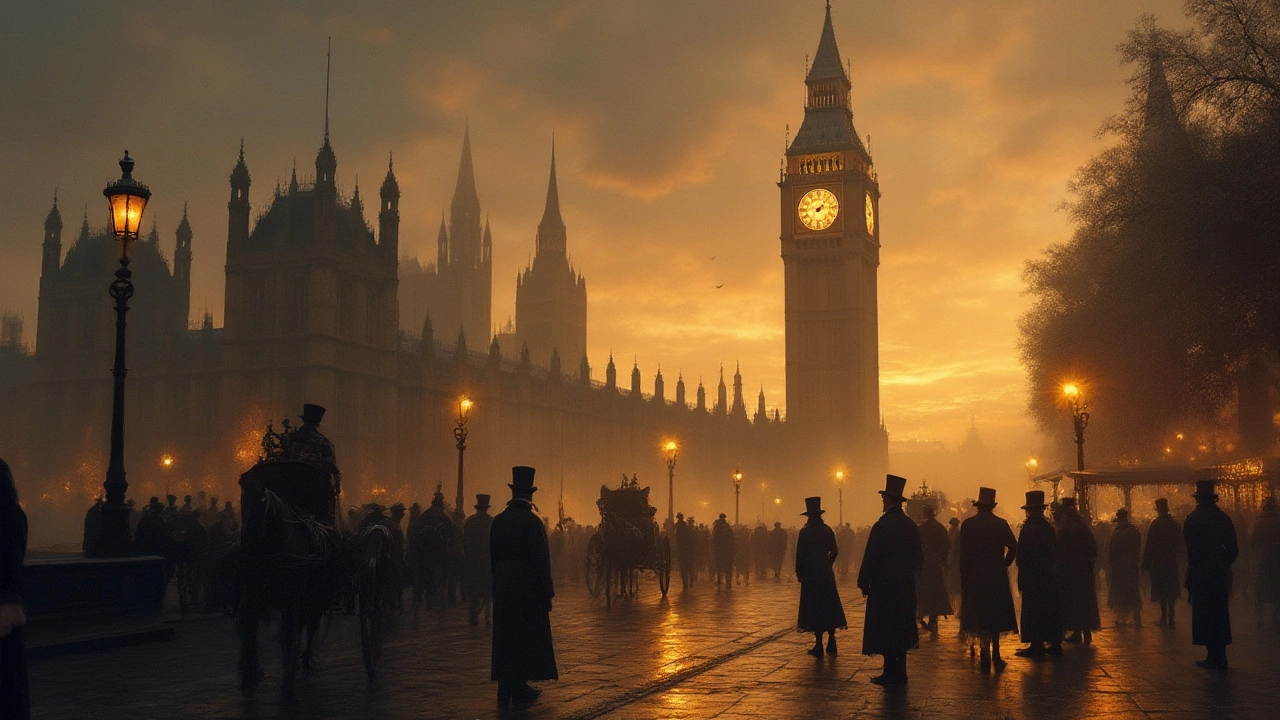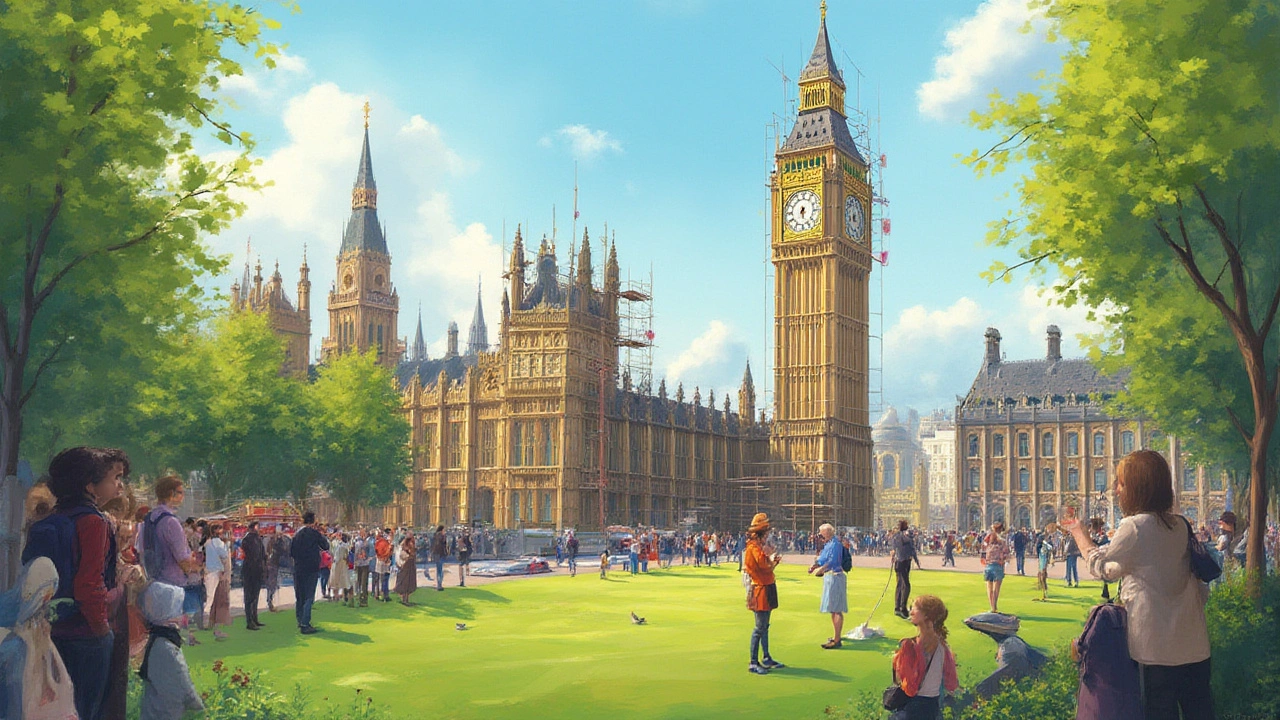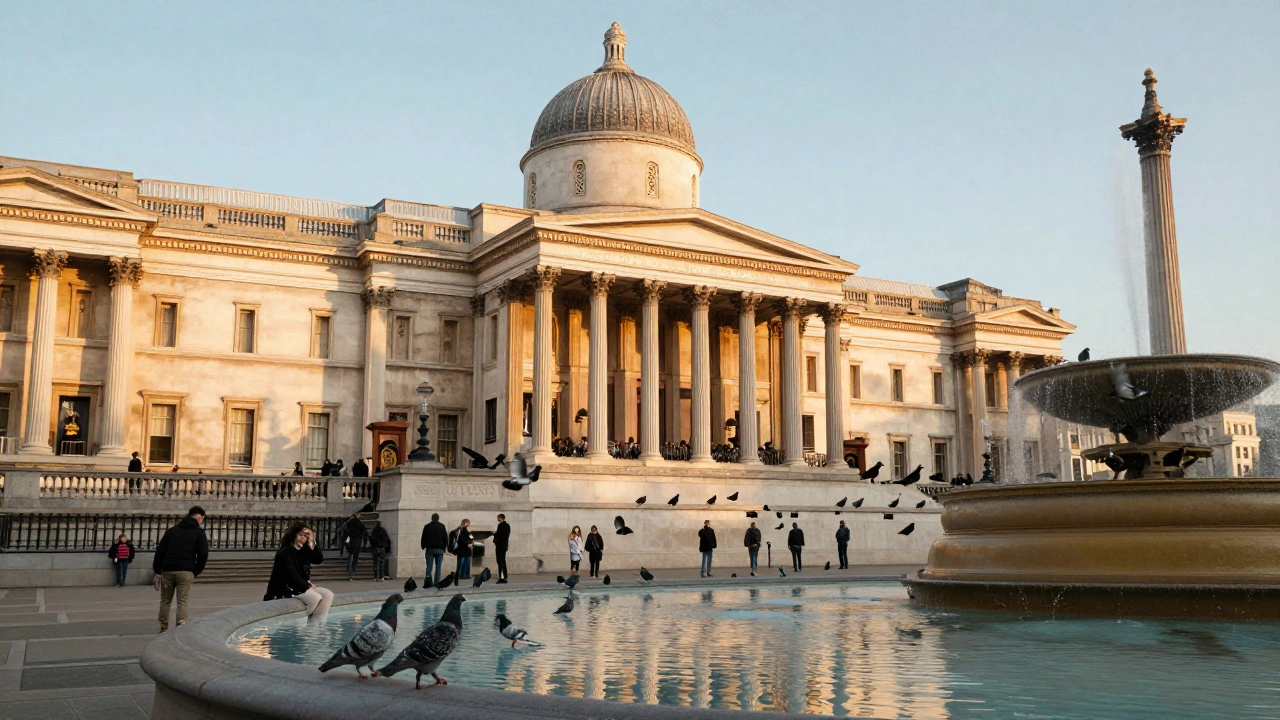Big Ben Through Time: Landmark Restoration & History in London

The clock tower at the north end of the Palace of Westminster isn’t just a fancy backdrop for tourist selfies or a classic image on a postcard. Big Ben holds a unique place in the daily soundtrack of life in London. Whether you’ve watched the clock face turn golden right before the train whisks you over Westminster Bridge, or you’ve paused in the evening to catch its chimes echoing against the Thames, this landmark feels like a Londoner’s friend, ever-present and surprisingly comforting in a city always on the move.
Victorian Ambition and the Birth of London’s Famous Clock
Big Ben didn’t spring up overnight. Back in the mid-19th century, London was still shaking off the aftershock of the devastating fire that had ripped through the Palace of Westminster in 1834. The city needed both a practical centrepiece to the rebuilt complex and a symbol of British ingenuity. Enter architect Charles Barry, whose vision for a neo-Gothic palace needed a grand tower—and Augustus Pugin, the mind behind the tower’s distinctive detail (although, it’s said, he only got to see the finished designs before he died, never the actual brickwork).
The clock itself was a source of high drama. The government wanted nothing less than the most accurate public clock in the world—spot on to within a single second. Clockmaker Edward John Dent got the job of building the mechanism, though after he died, his stepson Frederick Dent finished it in 1854. Testing out those famous chimes (the ones you now hear on the BBC World Service), Benjamin Hall—who was London’s Commissioner of Works and happened to be rather tall—lent his name to the bell, which simply became known as “Big Ben.” Purists will tell you “Big Ben” is only the bell, while “Elizabeth Tower” is the actual structure, renamed in 2012 for Queen Elizabeth II’s Diamond Jubilee, but in the city, they blur together—no one gets picky when you’re meeting under ‘Big Ben’ in the pouring rain.
Building the tower took years. Thousands of bricks, hundreds of square metres of limestone from Anston in Yorkshire, Cornish granite, and up in the belfry, a cast-iron framework that was both sturdy and stunning. Its completion in 1859 was celebrated with the installation of the 13.5-tonne Great Bell, although—true to London’s slapstick undertone—the first bell cracked and needed to be recast. The clockwork itself, crafted in the St James’s district, didn’t skip a beat for nearly a century despite pollution, bombings during the Blitz, and even floods from the Thames threatening the Palace’s foundations. Londoners came to rely on the chimes as background music for everyday life. When Big Ben’s bongs rang in the New Year or marked moments of national pride (and sorrow), it reminded everyone—locals having a pint at the Red Lion on Parliament Street, tourists crossing Westminster Bridge—this city belongs to its people.
Next time you walk past the South Bank’s riverside festivals or queue outside the London Eye on a busy Saturday, look up. The gleaming, gilded clock face (that’s 23-carat gold leaf, by the way) stands out against the weathered stone, showing just how much care went into its creation. It’s fair to say no two storms in London’s history left the clock untouched, but its ability to keep ticking became proof that London—no matter what—always gets on with it.

Fascinating Details and Local Legends: Big Ben in London Life
There’s something irresistible about Big Ben—not just for visitors on the classic red double-decker bus tour, but for anyone who’s called London home. Did you know that the clock faces are illuminated by hundreds of energy-efficient LED bulbs, a small step toward sustainability for ancient heritage buildings? You can see the warm golden glow ripple across the Thames at night, especially after a West End show lets out and the bridges are full of Londoners heading home or popping into Gordon’s Wine Bar for a late-night drink.
If you’ve ever taken the river bus service from Embankment, you’ll have noticed how Big Ben keeps you oriented (no matter how twisty the city gets). Local legend says that the bell’s chime can be heard up to five miles away. For decades, its hourly bongs were broadcast live by the BBC at midnight, keeping expats, soldiers abroad, and Londoners in tune with their home city. Those deep tones don’t just tell the time—they set the rhythm for key London events. Marathon runners hear the chimes echo near the Thames path; protestors time their rallies for when the bells toll; and fans outside during Euros, nervously glancing upwards, get a real sense of London time ticking forward.
The tower isn’t simply famous for surviving the Blitz, either—although it was only grazed by a bomb in 1941, unlike St Pancras Church, which took a direct hit. When the nation needed comfort after the loss of Princess Diana in 1997 or during the 75th D-Day Anniversary, the tower’s chimes turned into a sort of public heartbeat, steady and reassuring. For some, that’s the spirit of London—stiff upper lip, don’t-miss-a-beat fortitude wrapped up in stone and steel.
The numbers are dizzying. Each clock face is over seven metres across, with minute hands that stretch for over four metres—each as hefty as a small hatchback. The hour hands, shorter but still stately, are made of gunmetal. Up in the belfry, the Great Bell is joined by four smaller bells, each playing part of the melodic quarter-hour. Every year, over 13 million people pass through the area, snapping photos from Westminster Bridge, ducking into nearby cafés (like the iconic Café Nero just off Whitehall), and glancing up at the tower. The local council estimates that stops for Big Ben selfies alone slow pedestrian traffic by 20% on a busy summer afternoon!
But the relationship isn’t just practical or picturesque. Big Ben pops up in pop culture everywhere: James Bond movies, Doctor Who, Harry Potter and the Order of the Phoenix (where the Death Eaters shatter the bridge nearby), and countless news broadcasts. It’s shorthand for British democracy, London tradition, and the stubborn resilience of a city that always bounces back.
Want to level up your local trivia game? Here’s a quick table of Big Ben stats for your next pub quiz at The Marquis of Granby:
| Fact | Number/Detail |
|---|---|
| Height of Tower | 96 metres / 316 feet |
| Weight of Great Bell "Big Ben" | 13.5 tonnes / 13,760 kg |
| Clock Face Diameter | 7.2 metres / 23.6 feet |
| Number of Steps to Top | 334 |
| Year Completed | 1859 |
If you ever have the chance to join one of the guided tours on Open House London weekend, don’t hesitate—climbing the 334 spiral steps to the belfry (not for the faint-hearted!) gives you not only the best view in Westminster but a sense of how tightly wired into daily London life the tower has always been.
Restoring a London Icon: Big Ben in the 21st Century
Big Ben might look eternal, but if you lived in London between 2017 and 2022, you probably remember the scaffolding that wrapped the tower like a Christmas present nobody could open. The massive conservation project—the largest in the tower’s history—cost around £80 million and saw teams of skilled craftspeople working through wind, rain, and even political crises to restore nearly every inch of the structure.
What made this project so special for Londoners wasn’t just the price tag. Restoration teams included local stonemasons trained at Southbank Colleges, heritage bricklayers, and traditional clockmakers, all blending 19th-century skills with a few 21st-century tricks. They replaced more than 3,500 pieces of stone from Yorkshire and Cornwall, cleaned years' worth of London grime, and carefully repaired the hands and dials with the same methods Augustus Pugin would have recognised. From local pubs to the London Assembly, people kept track of every milestone. Even pubs like The Red Lion started selling "Big Ben’s Brew" to raise funds for heritage charities—and yes, it’s a decent amber ale.
During those silent months when the bell was stilled for safety, London felt a bit off-kilter. Rush hour drivers, joggers at St James’s Park, and Thames riverboat skippers all said they missed the anchor of that hourly chime. The pause gave the city time to reflect on what the landmark meant: not just as a tourist draw, but as a reminder that London’s soul is made up of tradition, repair, and a willingness to adapt. When the newly restored clock faces were unveiled—gleaming in their original Prussian blue rather than the faded black—people lined the bridge, phones out, and even lifelong Londoners admitted to a lump in the throat. It’s hard not to feel moved when a little piece of your city’s story comes back sharper than ever before.
The completed works didn’t shy away from future-proofing, either. The tower now boasts modern fire protection, energy-saving lights, and improved accessibility for maintenance teams. Preservation means more than just slapping on a fresh coat of paint; it’s about ensuring Londoners and visitors—whether you’re having a picnic in Victoria Tower Gardens or visiting from Seoul—get to experience the magic for another 150 years. If you’re quick, you can catch special exhibitions on the story of the restoration at the nearby Houses of Parliament Education Centre, where school groups trace the craftsmanship that goes into each cog and pane of glass.
Big Ben’s story ties together almost everything that makes London function: layer upon layer of old and new, hard graft and a refusal to let the weather win. Next time you walk down Whitehall at dusk or peer at the skyline from Primrose Hill, listen out—those chimes don’t just mark the hour, they mark the heartbeat of this restless, remarkable city. As for tips, if you’re hoping to grab that perfect Big Ben photo, get to Westminster Bridge early—before the crowds, preferably on a rare sunny morning, when the *Big Ben* face glints across the water and it feels, just for a second, as if London belongs to you alone.
